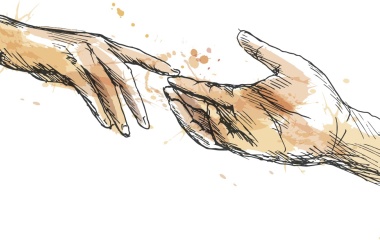
While there are various themes that run throughout Sefer Shemot, that of slavery is perhaps the central one. This notion is presented, with differing foci, throughout the book and actually carries over to the remaining books of the Chumash.
Sefer Shemot opens by describing the descent of the Jewish people into slavery. A once proud and powerful family has become a nameless, faceless and powerless supplier of forced labor. The image of backbreaking work, death and despair is the one etched into our minds at the Pesach Seder. Modern day anti-Semites have learned much from Pharaoh. And so must we.
“But the seventh day is for the Lord, your G-d. Do not do all work; you, your son, your daughter, your slave, your maidservant.” (Shemot 20:10). At Sinai, G-d declared that slaves, too, have equal rights to dignity, rest and respect. Even more startling and revolutionary is what happens in the immediate aftermath of Sinai, as the Torah’s focus on how to treat a slave takes center stage.
The grandeur of Sinai is followed by a long series of laws dealing primarily with the nitty-gritty details of one’s day-to-day routine. While many of the mitzvoth are described throughout the 40-year sojourn in the desert, the laws in Mishpatim were taught directly at Sinai, on the heels of Divine Revelation. The famous response of the Jewish people to G-d’s charge, “Na’aseh v’nishma, we will [first] do and [then] listen”, appears only at the end of parshat Mishpatim (Shemot 24:7). And this series of laws begins with none other than those of slavery: “When you buy a Hebrew slave…”
Here the Torah goes well beyond the Ten Commandments. We must see to it that a slave can have a normal family life, no different than that of his master. As the Talmud states, “One who acquires a Hebrew slave acquires a master for himself” (Kiddushin 20a); care must be taken lest the standard of living of the master be higher than that of the slave. The Torah itself describes the obligation of the master to marry off his maidservant, almost as if she is his daughter. Most fascinatingly, the laws of how a husband must treat a wife are derived from the required obligations towards a married woman slave. In Sefer Devarim (15:13), the Torah introduces the laws of severance in regard to a departing slave. Along with the prohibition against returning a fleeing slave (Devarim 23:16) to his original master, these laws help a slave ease himself back into society as a whole.
Treating a slave as an equal (or even better) is not an easy task. Parshat Mishpatim in general and the laws of slavery in particular have, as their introductory phrase, “and these are the laws that you shall place before them” (Shemot 21:1). The phrase “place before them” connotes more than the usual “and G-d spoke to Moshe saying”—hence Rashi’s comment that it is not enough to teach the laws two or three times. Rather, they must be gone over and over again so that memory presents the laws like a “set table”. Not discriminating in any way against a slave—or anyone else for that matter—must become second nature. Over and over again, we must teach the dignity of all humans, of all created in the image of G-d. And over and over again, the Torah demands we treat the widow, orphan, stranger, convert—those whom one may be prone to take advantage of—with the greatest sensitivity. While much progress has been made, there is still much to do in this area.
The opening words of the Divine revelation are a declaration that G-d removed us from the Egyptian house of bondage. But that is not enough. “Because the Jewish people are slaves unto Me, they are My slaves, whom I took out of Egypt. I am the Lord, your G-d” (Vayikra 25:55). It is an honour to be a slave—if G-d is your master. We who are created in G-d’s image must ensure that all who answer to us feel similarly honoured.



